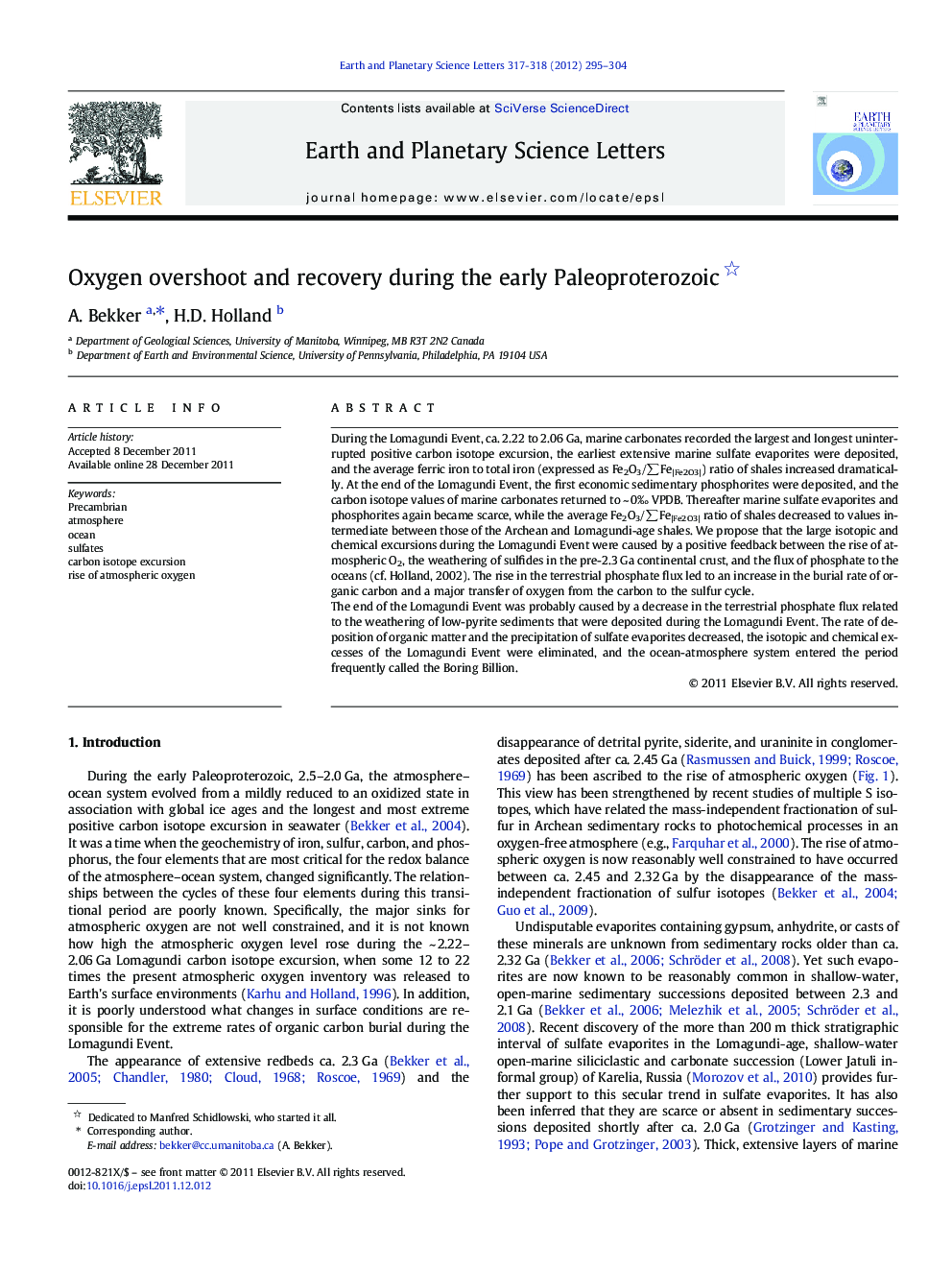| کد مقاله | کد نشریه | سال انتشار | مقاله انگلیسی | نسخه تمام متن |
|---|---|---|---|---|
| 4677646 | 1634812 | 2012 | 10 صفحه PDF | دانلود رایگان |

During the Lomagundi Event, ca. 2.22 to 2.06 Ga, marine carbonates recorded the largest and longest uninterrupted positive carbon isotope excursion, the earliest extensive marine sulfate evaporites were deposited, and the average ferric iron to total iron (expressed as Fe2O3/∑Fe|Fe2O3|) ratio of shales increased dramatically. At the end of the Lomagundi Event, the first economic sedimentary phosphorites were deposited, and the carbon isotope values of marine carbonates returned to ~ 0‰ VPDB. Thereafter marine sulfate evaporites and phosphorites again became scarce, while the average Fe2O3/∑Fe|Fe2O3| ratio of shales decreased to values intermediate between those of the Archean and Lomagundi-age shales. We propose that the large isotopic and chemical excursions during the Lomagundi Event were caused by a positive feedback between the rise of atmospheric O2, the weathering of sulfides in the pre-2.3 Ga continental crust, and the flux of phosphate to the oceans (cf. Holland, 2002). The rise in the terrestrial phosphate flux led to an increase in the burial rate of organic carbon and a major transfer of oxygen from the carbon to the sulfur cycle.The end of the Lomagundi Event was probably caused by a decrease in the terrestrial phosphate flux related to the weathering of low-pyrite sediments that were deposited during the Lomagundi Event. The rate of deposition of organic matter and the precipitation of sulfate evaporites decreased, the isotopic and chemical excesses of the Lomagundi Event were eliminated, and the ocean-atmosphere system entered the period frequently called the Boring Billion.
► The Lomagundi Event (LE) is linked to the atmospheric oxygenation.
► Continental weathering of sulfides increased acidity and P flux to the oceans.
► High P flux increased Corg burial and led to oxygen transfer to the sulfur cycle.
► Terrestrial P flux later decreased due to weathering of low-pyrite LE sediments.
► Organic matter and sulfate evaporite burial decreased after the LE.
Journal: Earth and Planetary Science Letters - Volumes 317–318, 1 February 2012, Pages 295–304